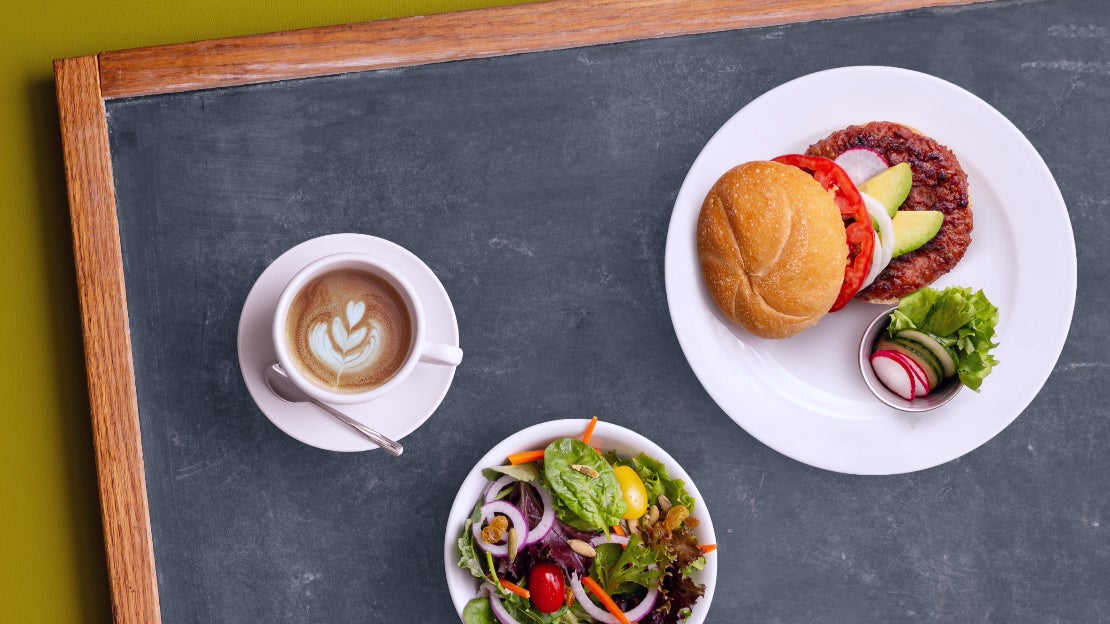
- Latest News
- Nutrition
Everyday Q & A about healthy, sustainable menus
Have questions about plant-based diets and your menu? You’re not alone.
Read on to clarify some key points you may be wondering about.
Q: Are plant-based diets healthy compared to traditional diets?
A: Appropriately planned plant-based diets are healthy, nutritionally adequate, and may provide health benefits.1 Existing studies suggest that plant-based diets can benefit both health and the environment when compared to a typical Western diet.2 However, plant-based diets are not healthy by default. Remember, it's all about balance!
Q: Will focusing on health and sustainability detract from your ability to deliver a great dining experience?
A: It certainly doesn’t have to. Armed with your knowledge, creativity and all the flavours of the plant world, you can deliver incredible tastes and textures that will have your guests clamouring for more.
Q: Will plant-based options cannibalize my traditional menu?
A: No, it may even increase your sales. You can continue to provide the dishes that your loyal customers love, while adding other choices that will draw in new customers and attract large bookings with diverse needs—giving you a new stream of loyal customers.
Q: Is eating organic or locally raised meat just as sustainable as eating plant-based alternatives?
A: Usually not. It’s true that eating meat from nearby farms can reduce greenhouse gases because it doesn’t have to be transported as far. However, for most food products, transportation accounts for less than 10% of the total GHGs emitted during the whole supply chain process.3 To improve sustainability, farms can also help limit water waste and chemicals that harm the environment by following regenerative practices, and buyers can opt for local or organic versions of animal by-products to help reduce the carbon impact of this food. Nevertheless, switching to plant-based foods is usually a more effective way of improving sustainability.
Q: Why do plant-based alternatives often cost more than traditional meat and dairy products?
A: At the moment, plant-based protein is not produced on a large enough scale to compete with the price of meat, which is exceptionally low and often supported by subsidies. However, the price gap is much smaller for developed categories like milk and butter.4 As plant-based meals continue scaling up to meet the growing consumer demand, they could reach price parity with conventional proteins.5 In the meantime, remember that many guests would pay more for more sustainable plant-based options. 4,6
Sources:
1 Melina V, Craig W, Levin S. Position of the Academy of Nutrition and Dietetics: Vegetarian Diets. 2016. Available from: https://pubmed.ncbi.nlm.nih.gov/27886704/
2 The European Federation of the Associations of Dietitians (EFAD). Position paper: Sustainable Dietary Patterns. 2021.
3 Ritchie H. You want to reduce the carbon footprint of your food? Available from: https://ourworldindata.org/food-choice-vs-eating-local. 2020.
4 Good Food Institute. Reducing the price of alternative proteins. 2021.
5 Boston Consulting Group and Blue Horizon Corporation. Food for Thought: The Protein Transformation. 2021.
6 Kantar. PBMS segmentation (FR, UK, DE, US, SG). 2022.
Access the full Nutripro "Table for 10 billion" magazine.




